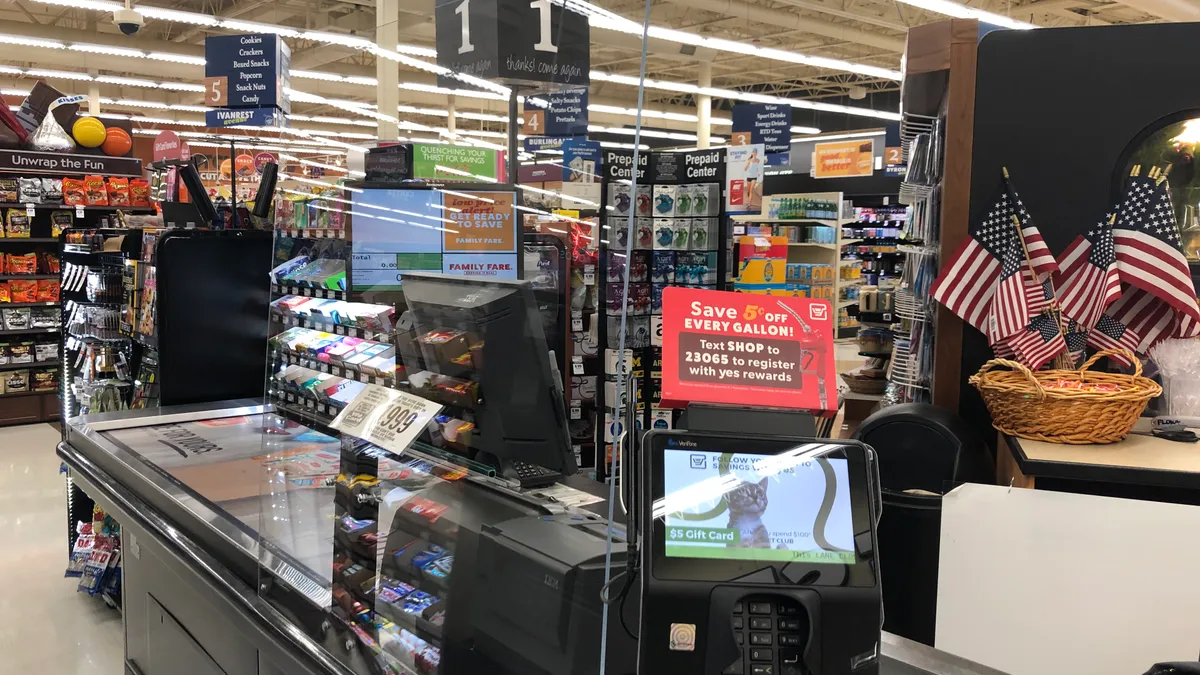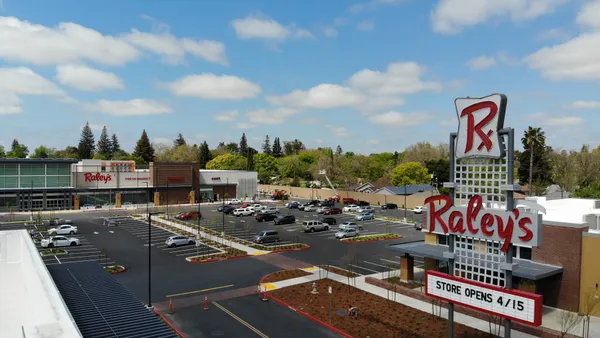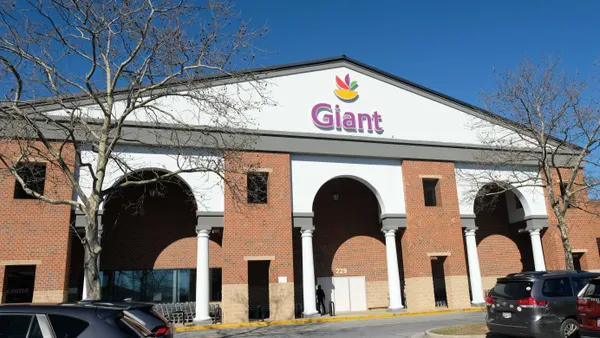Dive Brief:
- Many grocery retailers are installing plexiglass to their checkout stations to prevent the potential spread of the novel coronavirus and help its cashiers and customers with social distancing.
- Retailers that have started installing plexiglass to its checkout stations include Albertsons, Sprouts, Stop & Shop, Shaw’s, Walmart, Publix, Kroger and its banner stores, as well as local chains like Schnucks and Dierbergs.
- Kroger and Schnucks have also added the partitions to its pharmacy counters and Kroger has included them in its in-store Starbucks.
Dive Insight:
While the CDC has recommended people stay at least six feet apart to lower their risk of infection, it isn't possible for many grocery store employees, particularly those at the checkout counter. The plexiglass is meant to serve as an additional layer of protection between the shopper and the associate checking out the groceries.
“We’re asking that customers please stand behind the clear plastic guards until all groceries have been scanned and payment is complete,” a statement from Stop & Shop read. “Because the register area doesn’t allow for the cashier and customer to maintain a distance of 6 feet apart per CDC guidelines, plastic guards have been added for protection.”
The United Food and Commercial Workers said it has also worked with many retailers in installing enhanced protection like plexiglass panels. It's one of several measures grocers have announced recently to try to create a safer work environment for their employees.
In the past, health authorities like the CDC and Healthcare Infection Control have recommended the use of plexiglass to lab clinics when testing infectious disease specimens like Ebola. In order to disinfect surfaces like plexiglass, the CDC recommends using EPA-registered products and disinfectants with at least 70% alcohol like diluted bleach. Surfaces must also be cleaned with gloves on.
While the plexiglass or “sneezeguards,” as some grocers have called it, may protect an associate from any direct exposure like a cough or a sneeze, it still doesn’t keep six feet of distance between the two parties. The World Health Organization and numerous studies have shown that spread has been linked to close contact.
"While it is easier to practice social distancing in our aisles and other areas of the store, it can be more challenging at our checkout lanes and service counters," Schnucks said in a statement. "This added level of protection provides additional safety for our teammates and customers."
Another way that retailers are trying to improve social distancing is by capping the number of people that can enter a store at once. Trader Joe’s has set limits of 30, 35 and 50 at some of its locations. Albertsons has also added floor markers positioned throughout the store to serve as designated waiting points in order to limit the number of people that enter the aisle at once. Customers are also asked to wait for the shopper in front of them to finish bagging groceries before unloading their own onto the conveyor belt. Smart & Final is staggering its checkout lines so customers remain six feet away from each other.













